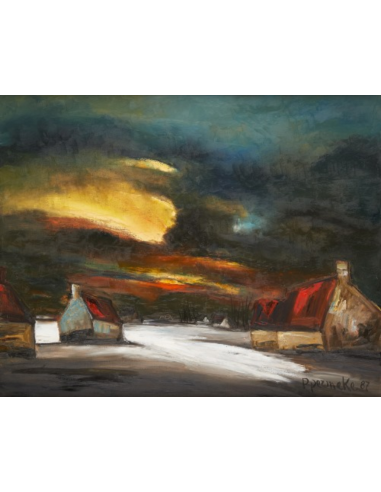

As the son of the painter Constant Permeke and grandson of the painter Henri Permeke, Paul Permeke (20 October 1918, Sidford, UK - 11 May 1990 Bruges) came from a family of artists. He himself was self-taught.
He founded a painters community in Dudzele with Rik Slabbinck and Luc Peire. He spent a long time in Spain, Portugal, Paris and the South of France and finally moved to Westkapelle in Flanders in 1960.
Permeke was artistically influenced by James Ensor, Marc Chagall and Bernard Buffet. His favorite motifs were city and village scenes, farmers, circus and variety artists and carnival activities.
Museums: Antwerp, Royal Museum of Fine Arts. Ostend, Mu.ZEE
Literatur: P. Permeke, "Schilder van Het Feestelijke Leven", Calatra Press, Willem Enzinck, Oostburg, Lahnstein